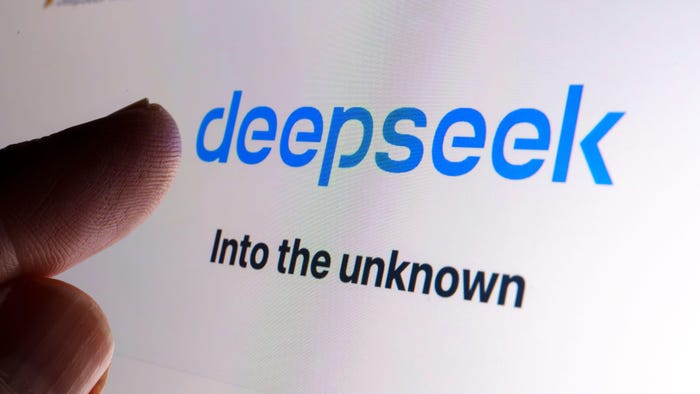Polyfill.io Supply Chain Attack Smacks Down 100K+ WebsitesPolyfill.io Supply Chain Attack Smacks Down 100K+ Websites
The site is supplying malicious code that delivers dynamically generated payloads and can lead to other attacks, after a Chinese organization bought it earlier this year.
June 26, 2024

A domain that more than 100,000 websites use to deliver JavaScript code is now being used as a conduit for a Web supply chain attack that uses dynamically generated payloads, redirects users to pornographic and sports-betting sites, and can potentially lead to data theft, clickjacking, or other attacks. The malicious activity follows the sale of the domain polyfill[.]io to a Chinese organization earlier this year.
Security researchers are warning that the cdn[.]polyfill[.]io domain has been compromised to serve malicious code in scripts to end users in a widespread attack. The site allows websites to use modern JavaScript features in older browsers by including only the necessary polyfills based on the user's browser.
Researchers from security monitoring firm c/side sounded the alarm about the attack in an advisory by founder Simon Wijckmans warning website owners to "check your code for any use of the polyfill[.]io domain and remove it from your applications."
"This attack places an estimated +100k websites at immediate risk," he wrote. "When a once-safe domain is embedded in thousands of websites and concealed like JavaScript threats are, it becomes a tempting path for malicious actors."
Dynamically Generated Payloads
Specifically, researchers discovered malicious, obfuscated code that "dynamically generates payloads based on HTTP headers, activating only on specific mobile devices, evading detection, avoiding admin users, and delaying execution" being injected into devices via websites using cdn[.]polyfill[.]io, Wijckmans wrote.
"In some instances, users receive tampered JavaScript files, which include a fake Google Analytics link," he wrote. "This fake link redirects users to various sports betting and pornographic websites, seemingly based on their region."
Given that the malicious code is JavaScript, it also could "at any moment introduce new attacks like formjacking, clickjacking, and broader data theft," Wijkmans noted.
Polyfill Users Were Forewarned
Polyfill users were already clued in back in February of the potential for malicious activity and were advised to stop using the polyfill[.]io domain after it was purchased by Funnull, a Chinese company. Following the sale, the developer of the open source Polyfill project, Andrew Betts, urged users in a post on X to remove references to the content delivery network (CDN), in part because he never owned the site.
"I created the Polyfill service project but I have never owned the domain name and I have had no influence over its sale," he wrote.
A site called Pollykill was even created on Feb. 27 "to bring awareness to a major JavaScript supply chain vulnerability," since Polyfill was sold and all Polyfill traffic was pointed "to the Baishan Cloud CDN."
Pollykill also provides users with alternatives to using the site to deliver JavaScript to their websites, warning users of the "many risks associated with allowing an unknown foreign entity to manage and serve JavaScript within your web application."
"They can quietly observe user traffic, and if malicious intent were taken, they can potentially steal usernames, passwords and credit card information directly as users enter the information in the Web browser," according to the site.
Immediate Action Required
Supply chain attacks that compromise website scripts and other code that's used widely across applications or Web properties are serious business, which means anyone using Polyfill needs to take action now, Wijkmans said.
"Third-party resources are in a very powerful position and thus a high value target for bad actors," he wrote, adding that CDNs hosting third-party scripts are especially subject to attack.
However, one thing that's important to note is that "the Polyfill service itself is still solid," Wijkmans said. "You can host your own version in a safe and controlled environment without issue."
As the problem lies in the domain cdn[.]polyfill[.]io, it should immediately be removed from any site using it. Moreover, threat feeds currenty don't flag the domain, so administrators should not rely on that, Wijkmans added.
The Polykill website also advises developers to use a code search tool or integrated development environment (IDE) to search for instances of the malicious domain in source code across all projects within an organization. It cites resources by the developer community Fastly Connect that also can help them secure websites that use Polyfill; these include polyfill-fastly[.]net and polyfill-fastly[.]io, which are free drop-in replacements for polyfill[.]io in a website's code.
Fastly’s fork of the open source code 223 also can be used to self-host the service to maintain full control over the code delivered to users, according to Fastly.
About the Author
You May Also Like
Uncovering Threats to Your Mainframe & How to Keep Host Access Secure
Feb 13, 2025Securing the Remote Workforce
Feb 20, 2025Emerging Technologies and Their Impact on CISO Strategies
Feb 25, 2025How CISOs Navigate the Regulatory and Compliance Maze
Feb 26, 2025Where Does Outsourcing Make Sense for Your Organization?
Feb 27, 2025




